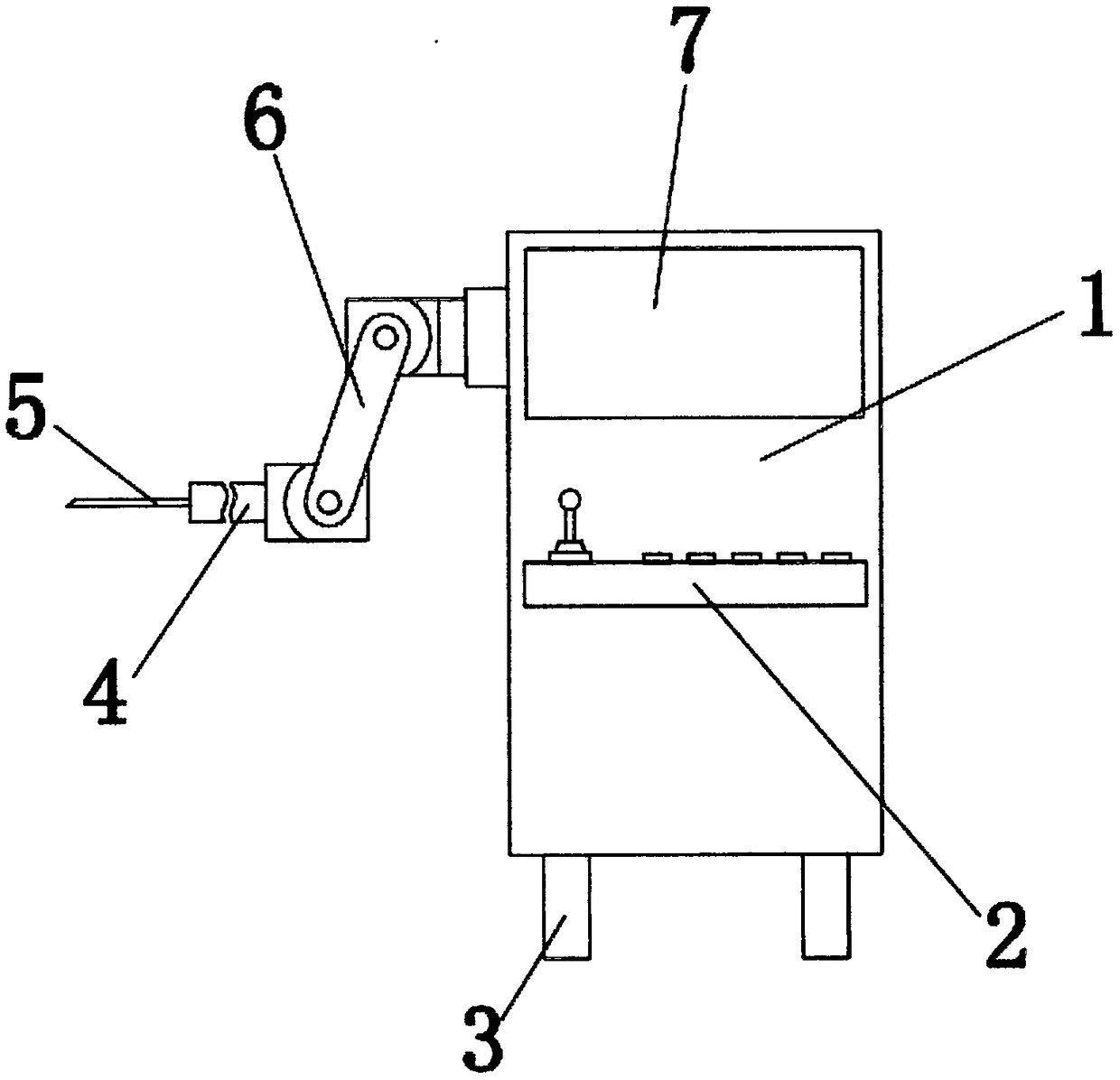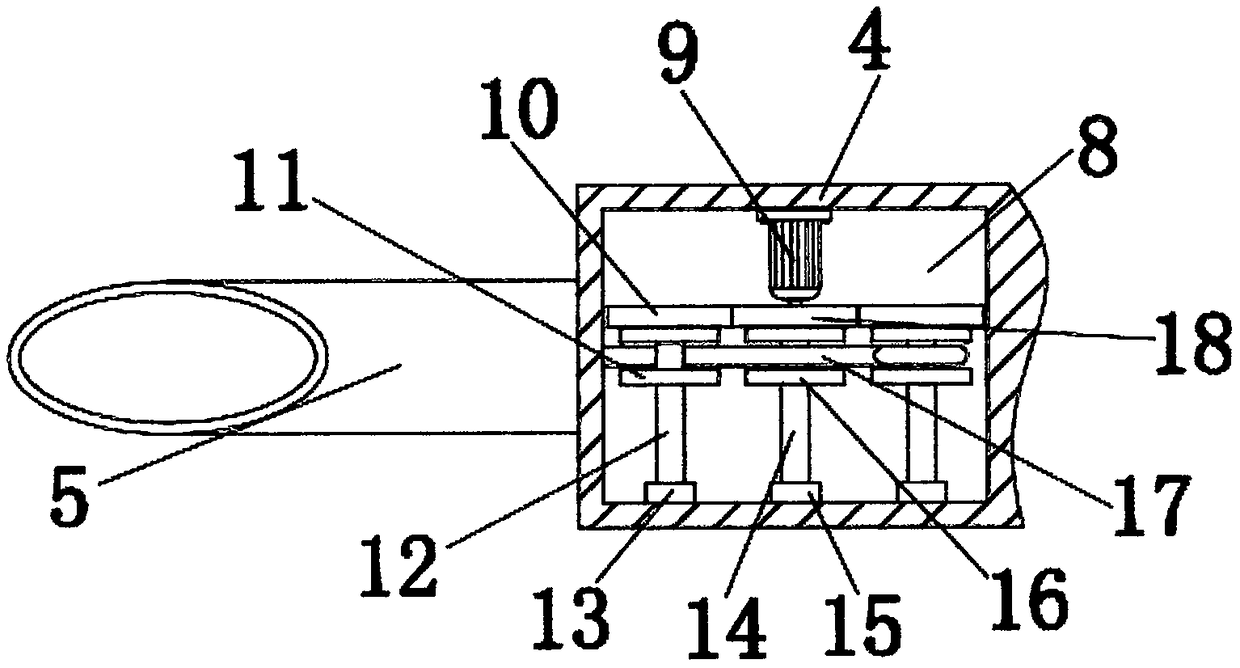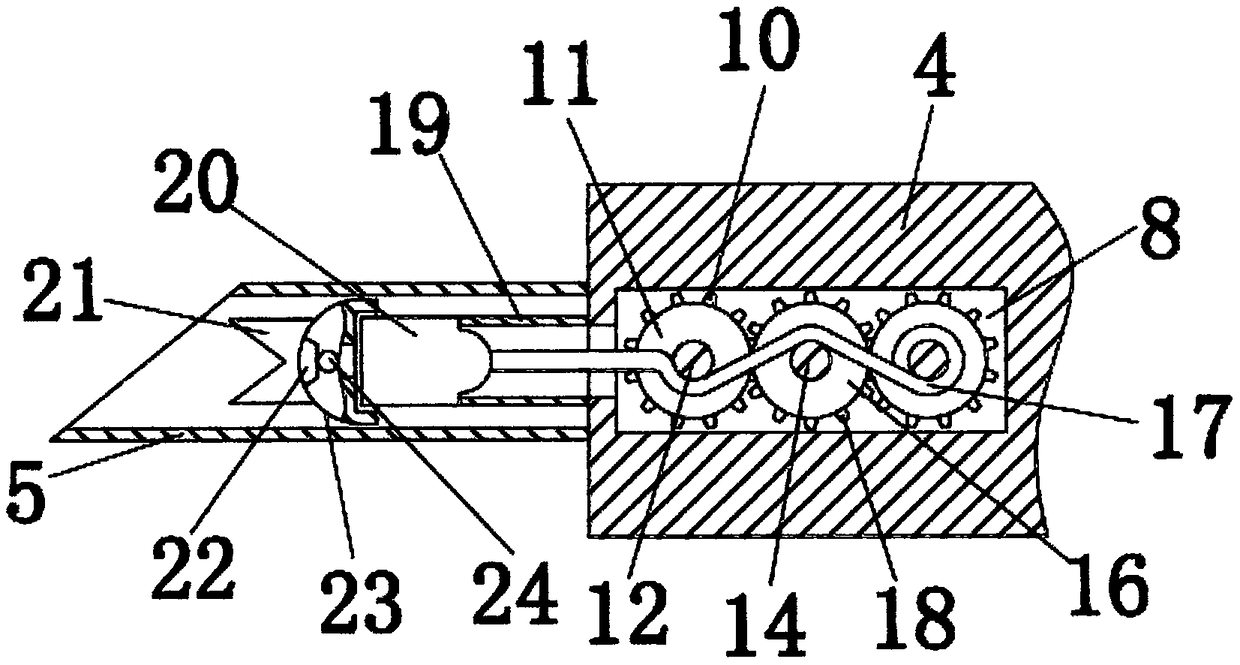Robot for removing cancer cells
A technology of robots and cancer cells, applied in the field of robots, can solve problems such as disease recurrence, incomplete treatment of cancer cells, and increase the difficulty of surgical operations, so as to achieve the effect of reducing risks and reducing the difficulty of operations
- Summary
- Abstract
- Description
- Claims
- Application Information
AI Technical Summary
Problems solved by technology
Method used
Image
Examples
Embodiment Construction
[0011] The following will clearly and completely describe the technical solutions in the embodiments of the present invention with reference to the accompanying drawings in the embodiments of the present invention. Obviously, the described embodiments are only some, not all, embodiments of the present invention. Based on the embodiments of the present invention, all other embodiments obtained by persons of ordinary skill in the art without making creative efforts belong to the protection scope of the present invention.
[0012] see Figure 1-3 , the present invention provides a technical solution: a cancer cell stripping robot, including a host 1 and an operating table 2, an operating table 2 is fixed in the middle of the front of the surgical host 1, a display 7 is fixed above the front of the host 1, and the display 7 Receive the information sent by the 3D visual sensor 23 through the wireless transmitter through the wireless receiving module, and convert the information int...
PUM
 Login to View More
Login to View More Abstract
Description
Claims
Application Information
 Login to View More
Login to View More - Generate Ideas
- Intellectual Property
- Life Sciences
- Materials
- Tech Scout
- Unparalleled Data Quality
- Higher Quality Content
- 60% Fewer Hallucinations
Browse by: Latest US Patents, China's latest patents, Technical Efficacy Thesaurus, Application Domain, Technology Topic, Popular Technical Reports.
© 2025 PatSnap. All rights reserved.Legal|Privacy policy|Modern Slavery Act Transparency Statement|Sitemap|About US| Contact US: help@patsnap.com



